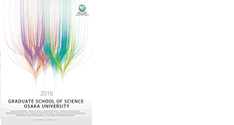Revelations from Ryugu: Muon non-destructive analysis unveils true nature of ancient asteroid
Since as far back as Ancient Greece, we have been fascinated by the solar system. But now, researchers from Japan have obtained asteroid data that give insights into the evolution of the solar system that past scholars such as Ptolemy, Galileo, and Copernicus could only have dreamed of.
Launched in 2014, the asteroid explorer Hayabusa2 left for Ryugu, a carbon-rich C-type asteroid and in 2018, it reached the vicinity of Ryugu, carrying out various remote observations and collecting samples from two locations on the asteroid. Meanwhile, a research group at Osaka University had been developing a non-destructive analysis method of light elements using muons to analyze Ryugu since around 2010, before the launch of Hayabusa2.
Against such a backdrop, an initial analysis project involving international researchers began in 2021, conducted by Dr. Nakamura of Tohoku University, leader of the “Stone Analysis Team” from the Hayabusa2 Initial Analysis Team. The information expected to come from the Ryugu stone is diverse, and the Stone Analysis Team carried out various studies on the shape of the stone as well as its elemental distribution and mineral composition (https://global.jaxa.jp/press/2022/09/20220923-1_e.html). The Osaka University research group was interested in the type and quantity of the elements that Ryugu contains, particularly the light elemental composition (C, N, O) of the material substance of life, and joined the initial analysis team.
One of the advantages of muon analysis is that the high penetrating power of muon characteristic X-rays makes it possible to non-destructively identify elements inside a sample (https://resou.osaka-u.ac.jp/en/research/2014/20140527_1). Data obtained from the Ryugu samples are consistent with the classification of Ryugu as a CI chondrite, clearly suggesting that the Ryugu rocks are extremely primordial material in the solar system. A further important finding is that the asteroid contains 25% less oxygen relative to silicon than typical CI chondrite meteorites that have impacted Earth. This suggests that CI chondrites, which were previously regarded as a benchmark for the chemical compositions of solid materials in the solar system, may in fact record some contamination from terrestrial materials.
Prof. Terada says “Carbon, nitrogen, and oxygen are the material substances of life. Therefore, our successful detection of these substances without destroying the Ryugu samples is a groundbreaking achievement.”
Given that analysis of the pristine samples from Ryugu provides a rare opportunity to compare material obtained directly from the asteroid with meteorites on Earth, the new data from the Ryugu samples may help to redefine the standard elemental compositions of solid materials in the solar system.

Credit: (left) Muon analysis team, (right) JAXA
The article, “Formation and evolution of carbonaceous asteroid Ryugu: Direct evidence from returned samples,” was published in Science at DOI:https://www.science.org/doi/10.1126/science.abn8671
Related links











